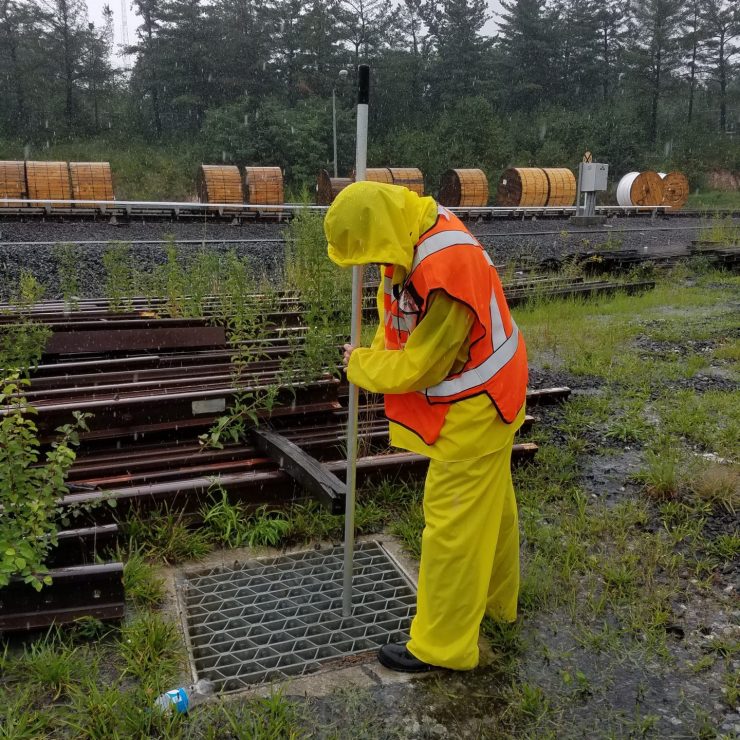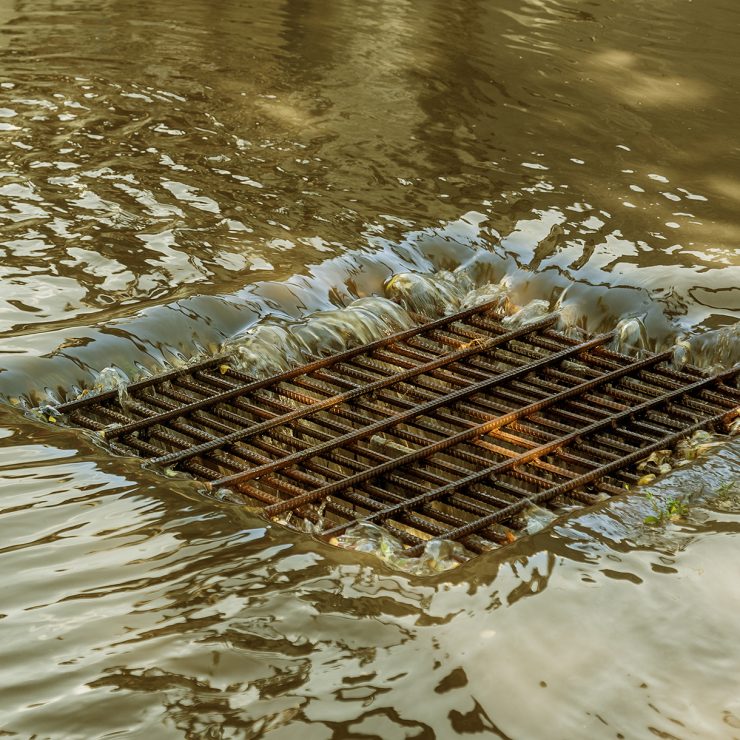By: Isha McKnight
The need for effective and expert environmental compliance monitoring of National Pollutant Discharge Elimination System (NPDES) permit conditions is a growing requirement in the industry and is a primary focus of many projects at Straughan. Here’s a look at how the quarterly stormwater monitoring works and how it is important for keeping Maryland streams clean.
There are many NPDES Programs Areas, including Animal Feeding Operations, industrial and municipal wastewater, stormwater, and water quality trading to achieve compliance when not practicable onsite. Within the stormwater program there are three discharge sources that are regulated: industrial activities, MS4s, and construction activities. This post specifically addresses stormwater discharges from industrial facilities.
Facilities may be required to obtain a permit in order to discharge stormwater. The Clean Water Act and 40 CFR 122.26(b)(14(i)-(xi) requires stormwater discharge associated with industrial activity to be covered under a NPDES permit. The state of Maryland is authorized to be the permitting authority for state NPDES stormwater activities. The Maryland General Permit for Discharges of Stormwater Associated with Industrial Activity (General Permit 12-SW-A) requires an industrial facility to monitor discharge during measurable storm events and to perform visual inspections on a quarterly basis.
What does monitoring require?
Within a three-month monitoring period, one stormwater sample must be collected from all authorized outfalls within a facility’s basin. Monitoring during a measurable storm event means that the sample must be taken during a precipitation event that results in discharge from the site. A period of at least 72 hours must occur between storm events in order for it to be a valid sample. Additionally, per permit conditions, the sample must be taken within the first 30 minutes of precipitation. All outfalls do not need to be sampled during a single storm event, but they must all be sampled by the end of the quarter.
In areas that receive snow, at least one quarter of monitoring must capture snowmelt discharge. In this instance a sample cannot be taken within the first 30 minutes of the storm event but can be taken when the temperature is warm enough to cause snowmelt and produce measurable discharge. Snowmelt monitoring in Maryland is often limited to the first quarter of the year (January – March).
I have my water sample, now what do I do?
The permit requires that each sample be assessed visually per Appendix B of the Maryland General Discharge permit is the Quarterly Visual Monitoring Form. The form is to be completed for each sample taken at the outfall location. Parameters to be evaluated include the color and clarity of the sample, whether or not there are floating or suspended solids, does the sample have a detectable odor, and is there any oil sheen on the surface of the water. The presence or absence of these parameters help to determine if there is adverse discharge coming off of the facility and entering the storm drains.
Adverse Weather Conditions
DO NOT attempt to collect samples during adverse weather conditions, including, but not limited to, flooding, high winds, or electrical storms. If an outfall(s) cannot be sampled during a monitoring period due to adverse weather conditions, then substitute samples will need to be taken in the following quarter, resulting in two samples in that quarter. In addition, if adverse conditions create a situation where it is not possible to collect samples within the first 30 minutes of a storm, the sample must be collected as soon as practicable. The reason why samples were not collected within the permit constraints need to be documented.
What are the monitoring periods?
- January 1 – March 31
- April 1 – June 30
- July 1 – September 30
- October 1 – December 31
Why is it important to regulate and monitor stormwater discharge?
Last, but certainly not least, monitoring of stormwater discharge-or nonpoint source pollution- is vital to maintaining the health of Maryland waterways and the Chesapeake Bay. Stormwater runoff picks up pollutants as it flows over impervious surfaces. Those pollutants end up in our streams and rivers, can have a detrimental impact on native flora and fauna, and it can alter natural hydrology and lead to flooding. The goal of the permit is to control and improve the quality of existing public stormwater discharge systems, which in turn helps to improve water quality, protect aquatic ecosystems, and protect public health.
Where can I find further information?
EPA. NPDES Stormwater Program
https://www.epa.gov/npdes/npdes-stormwater-program
EPA. Stormwater Discharges from Industrial Activities
https://www.epa.gov/npdes/stormwater-discharges-industrial-activities
MDE. General Permit for Discharges of Stormwater Associated With Industrial Activity Maryland General Permit No. 12-SW-A
https://mde.maryland.gov/programs/Permits/WaterManagementPermits/Pages/stormwater.aspx

